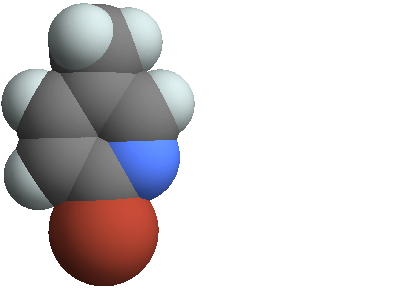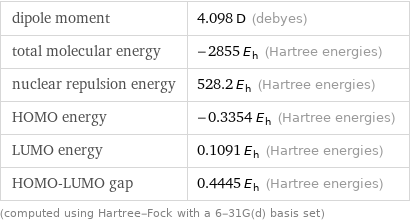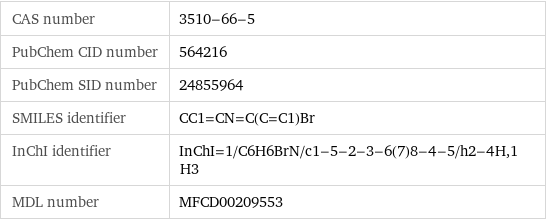Input interpretation

2-bromo-5-methylpyridine
Chemical names and formulas

formula | C_6H_6BrN name | 2-bromo-5-methylpyridine alternate names | 2-bromo-5-methyl-pyridine | 2-bromo5 methylpyridine | pyridine, 2-bromo-5-methyl- mass fractions | Br (bromine) 46.4% | C (carbon) 41.9% | H (hydrogen) 3.52% | N (nitrogen) 8.14%
Lewis structure

Draw the Lewis structure of 2-bromo-5-methylpyridine. Start by drawing the overall structure of the molecule, ignoring potential double and triple bonds: Count the total valence electrons of the bromine (n_Br, val = 7), carbon (n_C, val = 4), hydrogen (n_H, val = 1), and nitrogen (n_N, val = 5) atoms: n_Br, val + 6 n_C, val + 6 n_H, val + n_N, val = 42 Calculate the number of electrons needed to completely fill the valence shells for bromine (n_Br, full = 8), carbon (n_C, full = 8), hydrogen (n_H, full = 2), and nitrogen (n_N, full = 8): n_Br, full + 6 n_C, full + 6 n_H, full + n_N, full = 76 Subtracting these two numbers shows that 76 - 42 = 34 bonding electrons are needed. Each bond has two electrons, so in addition to the 14 bonds already present in the diagram add 3 bonds. To minimize formal charge nitrogen wants 3 bonds and carbon wants 4 bonds. Identify the atoms that want additional bonds and the number of electrons remaining on each atom: Fill in the 3 bonds by pairing electrons between adjacent highlighted atoms. Note that the six atom ring is aromatic, so that the single and double bonds may be rearranged: Answer: | |
3D structure

3D structure
Basic properties

molar mass | 172.03 g/mol phase | solid (at STP) melting point | 42 °C boiling point | 95.5 °C (measured at 1666 Pa)
Units

Molecular properties

dipole moment | 4.098 D (debyes) total molecular energy | -2855 E_h (Hartree energies) nuclear repulsion energy | 528.2 E_h (Hartree energies) HOMO energy | -0.3354 E_h (Hartree energies) LUMO energy | 0.1091 E_h (Hartree energies) HOMO-LUMO gap | 0.4445 E_h (Hartree energies) (computed using Hartree-Fock with a 6-31G(d) basis set)
Chemical identifiers

CAS number | 3510-66-5 PubChem CID number | 564216 PubChem SID number | 24855964 SMILES identifier | CC1=CN=C(C=C1)Br InChI identifier | InChI=1/C6H6BrN/c1-5-2-3-6(7)8-4-5/h2-4H, 1H3 MDL number | MFCD00209553
Safety properties

flash point | 103.3 °C

DOT numbers | 2811